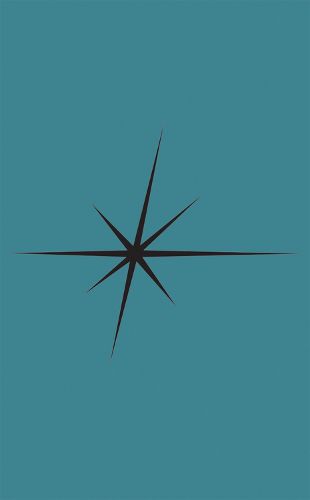Readings Newsletter
Become a Readings Member to make your shopping experience even easier.
Sign in or sign up for free!
You’re not far away from qualifying for FREE standard shipping within Australia
You’ve qualified for FREE standard shipping within Australia
The cart is loading…






On the forms of sabotage, insubordination, and invisible activity that evade the terrain of politics.
Inhuman Resources centers on what gets stranded outside the border of the political. It develops an account of the forms of sabotage, insubordination, and invisible activity that undermine the models of accountability, public presence, and identification on which representative politics rely.
Drawing from histories of disability, anticolonial and radical movements, toxicity, technology, and art, the book deconstructs the patterns and potentials of what Evan Calder Williams frames as "inhuman agency." Such agency takes shape in moments of unexpected friction between humans, materials, machinery, and non-human life and in the legal and economic forms that police the boundaries between them yet paradoxically profit from the erosion of those very divisions in labor, incarceration, circulation, and war.
The book follows two key lines of inquiry. On one side, Williams presents an account of what the Industrial Workers of the World termed a "cog's-eye view," the capacity to leave behind a politics of pride and respectability and think instead from an abject position caught inside the production process. On the other, through an extended reading of the medieval law of the "deodand" (in which property that caused the death of a person was forfeited to the Crown), the book thinks through how objects and animals come to be socially and culturally understood as endowed with an autonomous capacity for violence, in ways intimately bound up with the racialized construction of the concept of the human.
Spanning an ambitious range of subjects-from prison architecture to novels of circulation, concepts of paralysis, and silkworms saturated with toxic dye-Inhuman Resources gathers materials for a theory of a fundamentally different way of thinking about insurgent activity, one that does not seek exodus, pride, or autonomy but instead gathers its strength by passing through the very activities, architectures, appearances, and systems it seeks to ruin.
$9.00 standard shipping within Australia
FREE standard shipping within Australia for orders over $100.00
Express & International shipping calculated at checkout
Stock availability can be subject to change without notice. We recommend calling the shop or contacting our online team to check availability of low stock items. Please see our Shopping Online page for more details.
On the forms of sabotage, insubordination, and invisible activity that evade the terrain of politics.
Inhuman Resources centers on what gets stranded outside the border of the political. It develops an account of the forms of sabotage, insubordination, and invisible activity that undermine the models of accountability, public presence, and identification on which representative politics rely.
Drawing from histories of disability, anticolonial and radical movements, toxicity, technology, and art, the book deconstructs the patterns and potentials of what Evan Calder Williams frames as "inhuman agency." Such agency takes shape in moments of unexpected friction between humans, materials, machinery, and non-human life and in the legal and economic forms that police the boundaries between them yet paradoxically profit from the erosion of those very divisions in labor, incarceration, circulation, and war.
The book follows two key lines of inquiry. On one side, Williams presents an account of what the Industrial Workers of the World termed a "cog's-eye view," the capacity to leave behind a politics of pride and respectability and think instead from an abject position caught inside the production process. On the other, through an extended reading of the medieval law of the "deodand" (in which property that caused the death of a person was forfeited to the Crown), the book thinks through how objects and animals come to be socially and culturally understood as endowed with an autonomous capacity for violence, in ways intimately bound up with the racialized construction of the concept of the human.
Spanning an ambitious range of subjects-from prison architecture to novels of circulation, concepts of paralysis, and silkworms saturated with toxic dye-Inhuman Resources gathers materials for a theory of a fundamentally different way of thinking about insurgent activity, one that does not seek exodus, pride, or autonomy but instead gathers its strength by passing through the very activities, architectures, appearances, and systems it seeks to ruin.